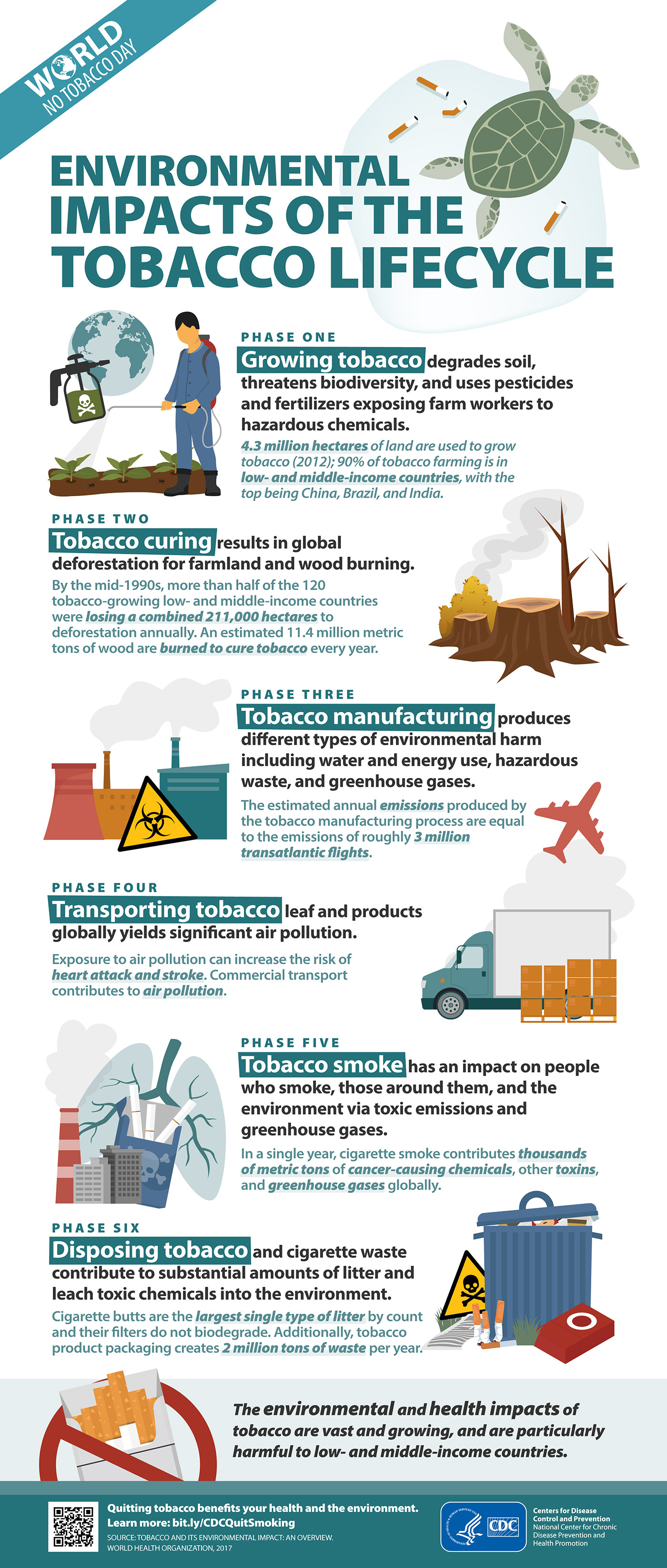Environmental Impacts of the Tobacco Lifecycle

Environmental Impacts of the Tobacco Lifecycle
Phase One GROWING TOBACCO degrades soil, threatens biodiversity, and uses pesticides and fertilizers exposing farm workers to hazardous chemicals.
- 4.3 million hectares of land are used to grow tobacco (2012)
- 90% of tobacco farming is in low- to middle- income countries, with the top being China, Brazil, and India.
Phase Two TOBACCO CURING results in global deforestation for farmland and wood burning.
- By the mid-1990s, more than half of the 120 tobacco-growing low- and middle-income countries were losing a combined 211,000 hectares to deforestation annually.
- An estimated 11.4 million metric tons of wood are burned to cure tobacco every year.
Phase Three TOBACCO MANUFACTURING produces different types of environmental harm including water and energy use, hazardous waste, and greenhouse gases.
- The estimated annual emissions produced by the tobacco manufacturing process are equal to the emissions of roughly 3 million transatlantic flights.
Phase Four TRANSPORTING TOBACCO leaf and products globally yields significant air pollution.
- Exposure to air pollution can increase the risk of heart attack and stroke.
- Commercial transport contributes to air pollution.
Phase Five TOBACCO SMOKE has an impact on people who smoke, those around them, and the environment via toxic emissions and greenhouse gases.
- In a single year, cigarette smoke contributes thousands of metric tons of cancer-causing chemicals, other toxins, and greenhouse gases globally.
Phase Six DISPOSING TOBACCO and cigarette waste contribute to substantial amounts of litter and leach toxic chemicals into the environment.
- Cigarette butts are the largest single type of litter by count and their filters do not biodegrade.
- Additionally, tobacco product packaging creates 2 million tons of waste per year.
The environmental and health impacts of tobacco are vast and growing, and are particularly harmful to low- and middle-income countries.
Source:
Tobacco and its environmental impact: an overview. Geneva: World Health Organization; 2017. Retrieved from: https://apps.who.int/iris/bitstream/handle/10665/255574/9789241512497-eng.pdf
Centers for Disease Control and Prevention
National Center for Chronic Disease Prevention and Health Promotion